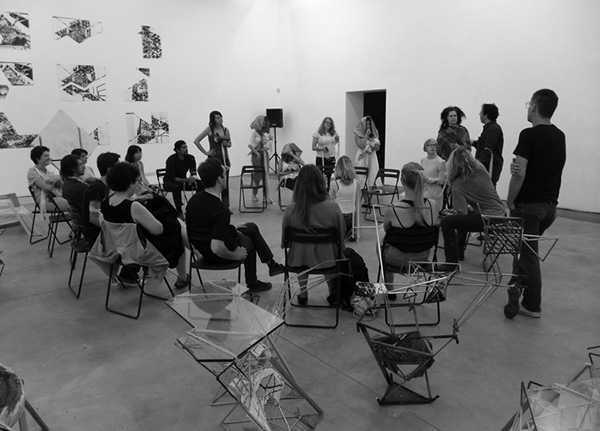
THE SAFFRON GREEN
first performed on
July 30, 2011
Human Resources Gallery / Perform Now! Chinatown, Los Angeles, CA
performed once in 2011
GENEVA SKEEN & MATHEW TIMMONS
Garrick Hogg, Andrew Lessman, Max Mayer (score); Geneva Skeen, Mathew Timmons, Garrick Hogg, Kate Bergstrom, Claire Cronin, Katie Disabato, Andrea Dominguez, Kate Durbin, Rafa Esparza, Matt Fielder, Kate Gilbert, Michael Anthony Ibarra, Mandy Kahn, Joanne Mitchell, Carmel Ni, Leila Perry, Jon Rutzmoser, Yecenia Torres, Christine Werthiem (performers); Tanya Rubbak (design); Geneva Skeen, Andrea Dominguez (costumes); Ben Rodkin (film), Dante Della Maggiore (additional footage)
Los Angeles, CA
510223507a510223507n510223507a510223507t510223507h510223507e510223507m510223507a510223507t510223507a510223507@510223507g510223507m510223507a510223507i510223507l510223507.510223507c510223507o510223507m
generalprojects.blogspot.com
THE SAFFRON GREEN
GENEVA SKEEN & MATHEW TIMMONS
“The Saffron Green” is a Space Opera in three movements composed for voice, walkie-talkie, megaphone, and radio. Employing a minimal modular score “The Saffron Green” brings together multiple analog technologies to explore both an outer space opera and an opera in public space. Taking the structure of a space opera and bringing it to street level, “The Saffron Green” borrows liberally from sci-fi operatic soundscapes and matches it with protest chants from the Arab Spring revolts.
The People Want to Topple, The People Want to Overthrow, The People Demand the Fall.
Designed to extend throughout Chinatown, the audience was invited to see the performance before the performance, the staging of the work as a work in itself at Human Resources Gallery, as performers readied themselves, got into costume, and warmed up their voices. After this extended overture, the audience joined the 25-person opera in a procession to where the performance culminated on, in, and above Chung King Road.
Using various tactics and aesthetic cues from the space opera genre, we shaped the space opera to the particular public space we were working in. Employing rooftops, second-story windows, and other features of the landscape along with the analog technologies used to heighten the quality of the voice, we wove together three vocal registers across three movements to create an impromptu sacred space. Costuming was designed to elevate a renegade pageantry, using color and space to provide a platform for the viewer to imagine a narrative that wasn’t entirely there. Sustained durations of text and sound-driven interpersonal and spatial discovery accompanied by playful dissonance and chance harmonies alongside the charged libretto-repurposed Arab Spring protest chants-and the use of repetition and variation took advantage of a minimal method key to propelling and sustaining an open-form, public opera.